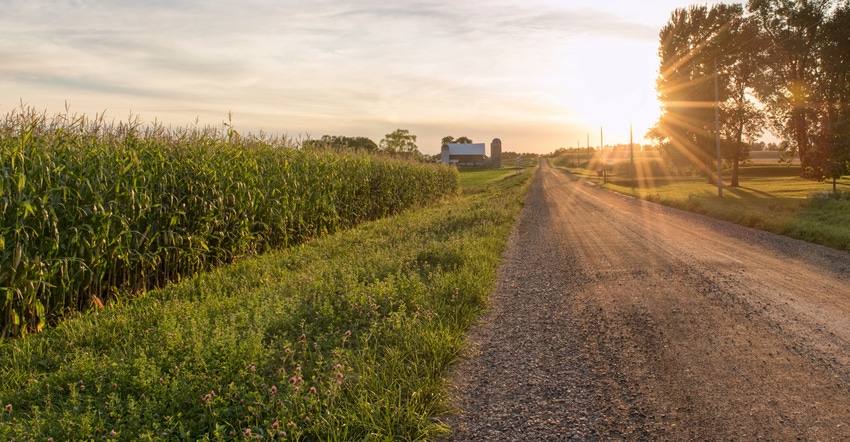May 1, 2020

The Great Plains Center for Agricultural Health has developed an informational website to guide agricultural workers through questions they have about working with community spread COVID-19.
“Over 60% of Iowa’s farmers are over the age of 65, which puts them at a high risk of developing severe symptoms if they develop COVID-19,” said Renée Anthony, GPCAH director.
The posters on GPCAH.org convey ways to enhance physical distancing on the farm to minimize the spread of this novel coronavirus, giving specific examples of how to change work routines to enhance distancing between workers and others on the farm. The site will be updated as new information on how to protect farmers becomes available.
Among the posters available now are information on best practices that incorporate physical distancing, handwashing and frequent disinfection of high-touch areas.
Here are some the questions tackled on the website.
Why should I be concerned about this novel coronavirus?
COVID-19 is a new virus. When it started infecting people, no one in the world had any immunity. For those experiencing the most severe complications from this viral infection, the lungs fill with fluid in response to trying to fight the virus, which leaves the blood, brain and heart starved of oxygen. Countries and states have issued “stay at home” orders to prevent the spread of this virus so that the healthcare system does not become overwhelmed with infected citizens needing critical and urgent medical care.
To prevent getting infected, can we simply stay away from people who are sick?
For this virus, the answer is a clear “no.” People who are exposed to someone carrying the virus may be incubating it for up to 14 days without showing any signs or symptoms of the disease. If you are infected but don’t know it, if you continue interacting with people — at the gas station, the bank, the grocery store, the co-op — then you would be spreading the virus without anyone knowing it. When this happens, we have “community spread” of the virus. Since our region does not have the ability to trace everyone you contacted and test them for the virus, we do not know who or how many people you might have infected.
Schools have closed down, as have areas of public gathering etc., so that we can stay at home, when at all possible. The recommendation of physical distancing (also called “social distancing”) is important to prevent disease transmission: If we maintain 6 feet of separation between ourselves and others in the community, we decrease the chance that we (or they) transmit the virus, causing another infection.
Why should I be concerned about so many COVID-19 cases needing hospital care?
There are many answers to this.
First, we do not have enough personal protection to prevent our healthcare workers from picking up the disease when infected people show up to the hospital. These workers are put at great risk of getting this disease (and passing it to their families) because someone showed up sick.
Second, if the public does not help to reduce the spread of this disease, there will not be enough beds at the hospitals to treat those who become critically ill.
Third, the hospital still needs to treat people for other illnesses – heart attacks, strokes, and broken bones still happen during this viral outbreak. The health care system is putting an enormous amount of resources into caring for COVID-19 patients: if these health care providers get sick, they are not available to help people who need other types of medical care that our friends and neighbors need.
If I get COVID-19, what are my chances of dying?
The true fatality rate is unknown because, right now, we have no real information on the true number of who has been infected. In early April, Italy data reports a high fatality of 7.7% (nearly 8 deaths for every 100 people infected), but in Germany it is 0.2% (2 per thousand infected).
Who has the highest risk of being severely ill when infected?
The U.S. Centers for Disease Control and Prevention has compiled risk factors. In short, people 65 years and older and people with the following underlying medical conditions are at risk of having deadly reactions to this virus:
chronic lung disease,
moderate to severe asthma,
serious heart conditions,
immunocompromised (such as cancer patients, organ transplant recipients, immune deficiencies),
diabetes,
dialysis patients,
liver disease, and
severe obesity (BMI >40).
How does this virus spread?
The World Health Organization and the US Center for Disease Control and Prevention (CDC) indicate that this virus is transmitted by both liquid droplets (from sneezing, coughing, and talking) and by fomite transmission (droplets on a surface, which are picked up by hands, and the hand travels to the mouth, nose, and/or eye).
The mission of this CDC/NIOSH-funded center is to keep people safe and healthy on the farm. The GPCAH is using the expertise throughout the University of Iowa’s College of Public Health to recommend precautions and best practices.
Find out more at https://gpcah.public-health.uiowa.edu/covid-19_april/.
Source: Great Plains Center for Agricultural Health, which is solely responsible for the information provided and is wholly owned by the source. Informa Business Media and all its subsidiaries are not responsible for any of the content contained in this information asset.
Read more about:
Covid 19You May Also Like




